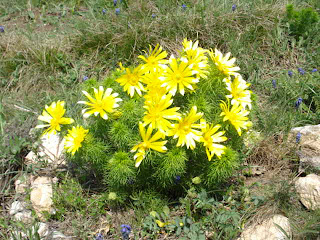De acordo com a Historia da Construcao desta Obra prima, a mesma teve sua origem de construcao pelo o Rei Bela IV da Hungria entre 1247 e 1265. O Castelo de Buda foi a principal residência do Imperador, pelo que durante o seu longo reinado o palácio se tornou, provavelmente, no maior palácio gótico do fim da Idade Média. Buda também era um importante centro artístico do estilo gótico internacional.
O palácio existiu apenas durante três décadas. Depois da revolução de 1918 e da desentronização da Dinastia Habsburgo, o Palácio Real tornou-se na sede do novo regente do Reino da Hungria, Miklós Horthy. Horthy viveu na ala Krisztinaváros, com a sua família, entre 1920 e 1944. Durante esse período, o palácio foi o centro da vida política e social da Hungria. As festas de jardim do regente eram eventos especialmente fabulosos. Entre os hóspedes famosos recebidos no palácio por Horthy contam-se o Rei Vítor Emanuel III da Itália, em 1937 e o Cardeal Eugenio Pacelli (futuro Papa Pio XII), em 1938.
No dia 15 de Outubro de 1944, Horthy fez uma tentativa de sair da guerra. No dia seguinte, um comando germânico liderado por Otto Skorzenyocupou o Palácio Real e forçou o Regente a abdicar.
O Castelo de Buda foi o último importante baluarte de Budapeste detido pelas forças do Eixo (alemãs e húngaras) durante o cerco de Budapeste, entre 29 de Dezembro de 1944 e 13 de Fevereiro de 1945. Os defensores do castelo tentaram, finalmente, quebrar o bloqueio soviético no dia 11 de Fevereiro, mas falharam totalmente, deixando 90% dos soldados mortos nas ruas de Buda. Alegadamente, os russos sabiam dos seus planos e, com algumas horas de antecedência, apontaram armas pesadas aos possíveis caminhos de fuga. Este acontecimento é considerado como uma das maiores catástrofes militares da história húngara.
Combates duros e fogo de artilharia deixaram o palácio, uma vez mais, num monte de ruínas. Todo o mobiliário desapareceu, telhados e abóbadas colapsaram, e as alas sul e oeste arderam. A destruição só pode ser comparada com a resultante do grande cerco de 1686.
Imediatamente depois da guerra, teve início uma campanha de pesquisa arqueológica para desenterrar os restos do castelo medieval. A pesquisa liderada por László Gerő (1946-1966) e László Zolnay (1967-1979) foi provavelmente a maior escavação a um castelo no Europa. Os antigos Jardins Reais, com as suas escadarias da viragem do século, pavilhões e casas de vidro tiveram que ser sacrificados, mas os resultados foram compensadores. Constatou-se que importantes partes do antigo palácio de Sigismundo e Matias sobreviveram sob o extenso nível de terra.
O primeiro plano de reconstrução dos restos medievais foi escrito por László Gerő em 1950 e finalizado em 1952. Os trabalhos de reconstrução foram concluídos em 1966. Contrariamente aos principios de reconstrução histórica geralmente aceite, o sistema de fortificação medieval foi plenamente reconstruído. Elementos importantes como a Grande Arruela do século XVI e a portaria medieval, a Torre Bastão, as muralhas e os zwingers foram reconstruídos de acordo com os resultados da pesquisa arqueológica e evidência pictórica contemporânea. A rebaixada ala sul do palácio gótico também foi reconstruída juntamente com a Galeria Gótica abobadada e a Igreja Baixa da antiga Capela Real. Nos zwingers foram plantados jardins em estilo medieval. As fundações da Torre Estevão também foram desenterradas,mas por falta de evidências arqueológicas suficientes a torre não foi reconstruída. Os restos da Torre quebrada foram novamente cobertos com terra.
A reconstrução em grande escala das fortificações medievais alteraram substancialmente a paisagem urbana de Budapeste. É considerado um projecto altamente bem sucedido, tendo conseguido conciliar a autenticidade histórica com as exigências do planeamento urbano.
Uma obra prima que a cada angulo, merece um clique! Esta foto tirada por mim em um dos incasaveis passeios pela beira do Danubio ao anoitecer.




































.jpg)







